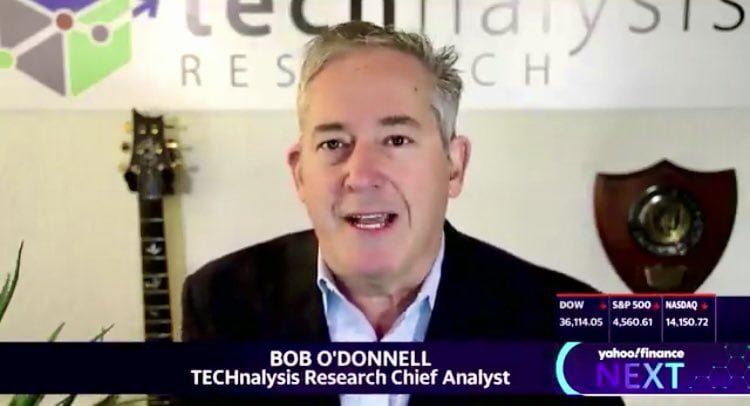Bob O’Donnell, President and Chief Analyst at TECHnalysis Research, in a candid conversation with Yahoo Finance Tech Editor, Dan Howley discussed the future of generative AI and how it’s going to affect our daily lives in 2024. His insights serve as a valuable guide for those interested in the future of generative AI, offering a glimpse into the exciting developments that lie ahead.
Bob O’Donnell’s thoughts gave us a glimpse into the upcoming increase in the use of generative AI, predicting a significant year where this technology will be commonly used in various sectors and among different groups of people. He has a strong conviction that the year 2024 will be a landmark year for AI, with it becoming an integral part of our daily lives and finding increased application across various industries.
Generative AI, despite making a significant impact in 2023, is yet to be fully embraced by the average person, particularly in the workplace. Bob O’Donnell believes that this trend is set to change dramatically in 2024. He envisions a turning point where the future of generative AI will become a common feature of daily routines. This shift, he predicts, will be especially noticeable among middle managers in small enterprises worldwide, who are likely to leverage this technology to bring about transformative changes in their operations.
O’Donnell also touched upon the emergence of devices specifically engineered for generative AI applications. He anticipates that Personal Computers (PCs) will play a crucial role in this regard. According to him, PCs are projected to be at the forefront of this technological revolution in 2024, catering to a wide range of consumer and business needs. This development is expected to open up new avenues for individuals and businesses to harness the power of generative AI.
In addition to hardware advancements, O’Donnell also foresees a surge in startups focusing on generative AI. He predicts the unveiling of novel services, particularly in the realm of audio and video applications. These developments are eagerly anticipated by the tech community, with significant showcases expected at events like the Consumer Electronics Show (CES).
NVIDIA, a dominant player in AI technologies, was a key focus of O’Donnell’s discussion. He acknowledged NVIDIA’s substantial advantage, largely due to its established CUDA software platform, which is widely utilized by generative AI developers. However, he also foresees a scenario of increased competition in 2024, as other semiconductor companies aim to challenge NVIDIA’s dominance. This, he believes, is a reflection of the market’s perennial quest for increased competition and innovation.
O’Donnell also delved into the role of other tech giants in the AI landscape. Companies like Intel, AMD, Amazon, and Microsoft, he believes, are poised to make significant strides in the AI domain. Alongside NVIDIA and Qualcomm, these companies are expected to revolutionize AI-processing software, thereby shaping the future of the industry.
Addressing the challenges associated with building AI models, O’Donnell emphasized the immense difficulty and cost involved. Given these constraints, access to AI model building is primarily restricted to tech giants. He underscored the strategic alliances formed by major players like Microsoft with OpenAI and AWS with Anthropic, highlighting the competitive landscape for smaller startups attempting to venture into model building.
In conclusion, O’Donnell hinted at the evolution of technologies like RAG (Retrieval Augmented Generation), predicting their significant impact on the market. While acknowledging the difficulty in predicting the precise trajectory, he affirmed the inevitability of substantial changes and the future of generative AI in 2024.

